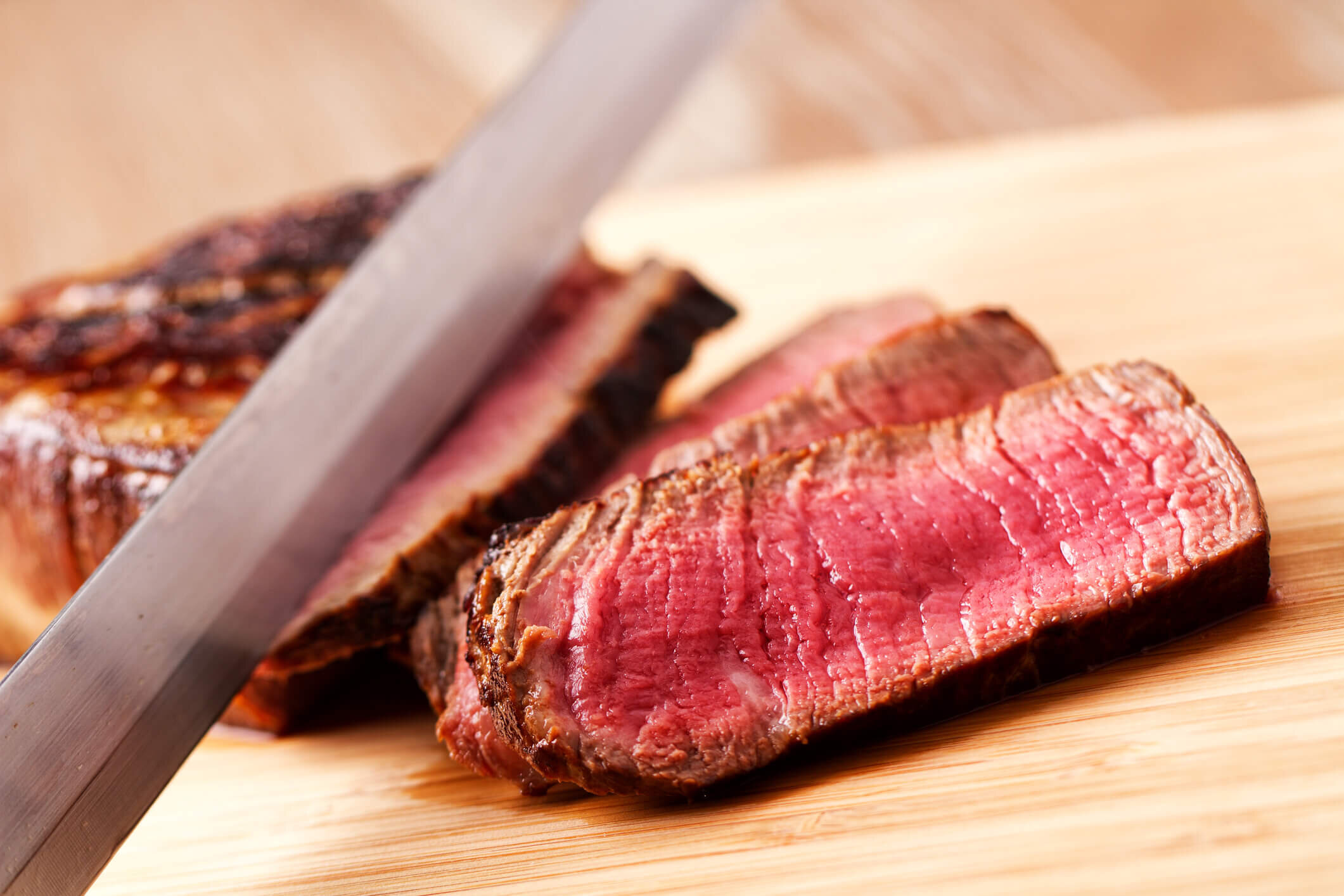Tips & Tricks: Why cutting meat against the grain is important
We love steak here, and you’ve probably heard us say time and time again on this website that beef and lamb (basically meat in general), should always be sliced ‘against the grain’ (or across the grain if you prefer). But what does that mean? What exactly is “the grain,” and why it is so important to slice against it? If those questions have ever gone through your mind, rest assured you’re not alone. For those of you who don’t have the time, here’s the short answer - it will help make your meat less chewy and more tender. For those who want to learn exactly why we’ve got the definitive answer below.
What exactly is the grain?
Let’s start with the ‘what’. Not to be confused with grains like cereals and legumes, the grain of the meat refers to the direction that the muscle fibers lie in your cut of meat. These muscle fibers are, unsurprisingly, tough, as they support the animal’s movement. The first thing you want to do is look for the grain by seeing what direction lines move across your piece of meat. You can see them on both cooked and raw cuts, and they resemble long streaks. Don’t let grill marks or chars distract you, though. In the photo above, you can see that the fibers more or less run vertically from top to bottom. The grain of the meat is easier to identify in certain cuts of meat. It’s more clearly defined and easier to see in tougher cut, things like flank or skirt steak, than it is in leaner cuts, like tenderloin.
Here’s why it’s important
The Quality Mark is your assurance the beef and lamb you buy is New Zealand grown, consistently lean and tender. Only beef and lamb that has met the highest quality standards can hold it. However, it’s not just the cut of meat that determines how tender it is, it’s also how you cut the meat. Preventing your meat from becoming chewy requires spotting the grain. As I mentioned above, the muscle fibers are tough. While our teeth can break them apart, doing so requires a lot of chewing (and you know how much people tend to hate chewy steak). Your knife, on the other hand, can make quick work of that tissue. How? By cutting against, or perpendicular to, the grain. The whole goal of slicing against the grain is to reduce the length of the muscle fibers to make chewing easier. Not to mention, this technique locks in those juices.
Are we making too much of this?
Ultimately, if you cut with the grain your steak will still be chewable. However, there are better things to do with your day than spending all of it chewing through a piece of meat. And it’s a matter of pride! Do you really want to be known as the griller of tough meat? It could make someone question your grilling prowess.
In all seriousness though, it does make a difference - four times the difference in fact! An experiement was conducted using a gadget called the CT3 Texture Analyzer that found that a slice of steak that was cut with the grain was four times harder to cut than the cut sliced against the grain.
This is even more true with the grass-fed beef and lamb we produce in New Zealand because of the muscle formation of the animals and how the cooking process is a bit different. Grass-fed meat is leaner and the animals have more active lives. As such, their muscles will be more developed than their grain-fed cousins. As a result of this, grass-fed meat is even less forgiving when it isn’t sliced against the grain.
How to cut against the grain
Once you find the grain, slice perpendicular to it as illustrated in the image above. A good way to go about it is to imagine holding a bundle of dry spaghetti and then looking down at the top. That bunch of small circles squished together is what you’re looking to achieve with a properly cut piece of meat. Rather than long strips of sinew (like you’d expect to see if you cut parallel to the grain), you’ll get a bunch of smaller packets of tissue. Cutting parallel to the grain will give you what looks like a bunch of spaghetti noodles viewed from the side.
Not every grain is the same
Because there are so many different cuts of meat, the grain won’t be the same in each. This is why it’s important to know what the grain looks like and be able to spot it, no matter what you pick up from your local butcher. How your butcher carves up the cut will determine the grain. For instance, one flank steak might feature a grain running top to bottom while another will have it left to right. Other cuts will generally provide the same grain every time. When slicing a T-bone, which is cut from the short loin of a cow, make sure your knife is perpendicular to the bone.
The thickness of the slice is also important
If you’re after a tender cut of meat, the thickness of the slice is as important as cutting across the grain. Muscle fibers run parallel to each other, so cutting thick slices against the grain still leaves a significant amount of tough muscle to chew through. If you’re looking to avoid this, keep your slices as thin as possible.
If all this talk of meat has got you hungry, we’ve got some great steak recipes on our website that you might want to check out.


